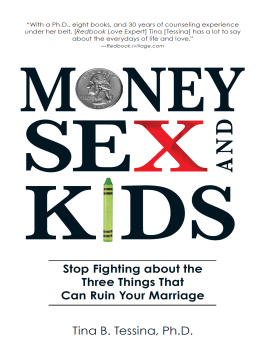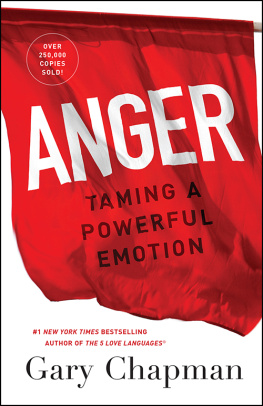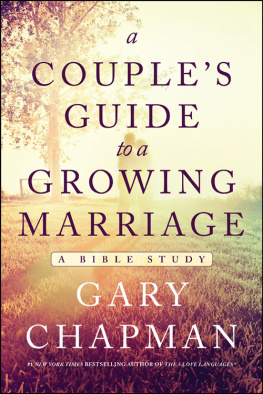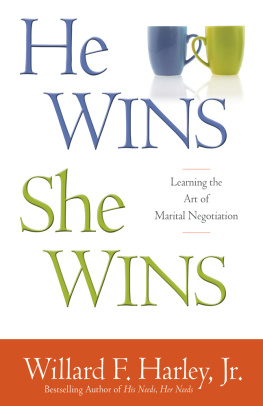Visit Tyndale online at www.tyndale.com.
Visit Gary Chapman online at www.garychapman.org.
TYNDALE and Tyndales quill logo are registered trademarks of Tyndale House Publishers, Inc.
Happily Ever After: Six Secrets to a Successful Marriage
Everybody Wins and Home Improvements copyright 2006 by Gary D. Chapman. All rights reserved.
Now What? and Profit Sharing copyright 2007 by Gary D. Chapman. All rights reserved.
In-Law Relationships and Making Love copyright 2008 by Gary D. Chapman. All rights reserved.
Happily Ever After first published in 2011 by Tyndale House Publishers, Inc.
Photograph of hands copyright Szefei/Shutterstock. All rights reserved.
Illustration of lace copyright Sergio Hayashi/Shutterstock. All rights reserved.
Illustration of damask pattern copyright vectorkat/Shutterstock. All rights reserved.
Author photo copyright by Boyce Shore & Associates. All rights reserved.
Designed by Jacqueline L. Nuez
Everybody Wins and Home Improvements edited by Dave Lindstedt
In-Law Relationships , Making Love , Now What? , and Profit Sharing edited by Kathryn S. Olson.
All Scripture quotations, unless otherwise indicated, are taken from the Holy Bible, New International Version , NIV . Copyright 1973, 1978, 1984 by Biblica, Inc. Used by permission of Zondervan. All rights reserved worldwide. www.zondervan.com.
Scripture quotations marked NLT are taken from the Holy Bible , New Living Translation, copyright 1996, 2004, 2007 by Tyndale House Foundation. Used by permission of Tyndale House Publishers, Inc., Carol Stream, Illinois 60188. All rights reserved.
Scripture quotations marked TLB are taken from The Living Bible, copyright 1971 by Tyndale House Foundation. Used by permission of Tyndale House Publishers, Inc., Carol Stream, Illinois 60188. All rights reserved.
Scripture quotations marked NKJV are taken from the New King James Version. Copyright 1982 by Thomas Nelson, Inc. Used by permission. All rights reserved. NKJV is a trademark of Thomas Nelson, Inc.
Library of Congress Cataloging-in-Publication Data
Chapman, Gary D., date.
Happily ever after : six secrets to a successful marriage / Gary D. Chapman.
p. cm. (Chapman guides)
Includes bibliographical references.
ISBN 978-1-4143-6444-5 (sc)
1. MarriageReligious aspectsChristianity. I. Title. II. Title: Six secrets to a successful marriage.
BV835.C4576 2011
248.8'44dc23 2011032095
Introduction
For more than thirty years couples have been coming into my office seeking help. Almost without exception they come because of one of six things: an inability to resolve their conflicts without arguing, an ongoing struggle to negotiate some kind of personal change, challenges with money, readjustment to married life after having children, problems in the bedroom, or relationships with in-laws.
Sadly, in many cases, the couples have argued for so long that each partner already knows what the other is going to say before he or she says it. Their arguments have become predictable, yet resolution eludes them. Exhausted, they come to me for professional help.
I listen carefully and take notes, but as a counselor, Im not as concerned with logic as I am about relationships. I know that in these couples hearts they want more than a resolution to a disagreement. What they long for is a better relationship.
And why wouldnt they? Deep down, dont we all long for the happily ever after that we read about in fairy tales?
There is good newsthat dream is attainable! In the three decades Ive been counseling married couples, Ive seen my share of marital struggles. But what Ive also seen, time and time again, is the power of God completely transform even the most troubled relationships.
When two people commit to each other and commit to working togetheropenly, honestly, and without personal agendasto solve their problems, positive change occurs!
Your marriage may be weeks, months, years, or decades old. It may be strong or struggling, stable or challenging. My prayer is that this book will encourage you, help you and your spouse better understand and communicate with each other, and provide practical takeaways for dealing with whatever conflicts you might face. You just may find that you have a new joy in each other and that you can indeed live and love... happily ever after.
Gary Chapman
When couples walk into my office looking for help, they inevitably come because of unresolved conflicts. They are seeking professional help, but I often sense that they view me more as a judge than a counselor, secretly hoping I will pronounce their spouse guilty of illogical thinking and unreasonable demands.
Because I am a counselor and not a judge, I begin the arduous task of listening to their complaints. They review their well-worn speeches for me, certain that I will see the logic of their respective positions. But I know that behind the frustration of unresolved conflicts is the desire for harmony.
Loving relationships are fostered by understanding, not by winning arguments. So I begin to ask a question such as, How do you feel when those words come out of his mouth? or What happens inside you when you hear her make that comment? I listen, take notes, and ask more questions, seeking to discover the feelings that lie beneath the conflicts. No conflict will ever be resolved successfully unless we first understand the underlying feelings.
I also ask couples questions about values: Why is this so important to you? The answer to that question often reveals the values that created a conflict in the first place. If I dont understand their values, I will never comprehend why they feel so strongly about the issues. As a counselor, I am doing for these couples what they have never learned to do for themselves. I am seeking to understand them. Understanding fosters resolution and harmony.
When I did the research for my book The Four Seasons of Marriage , I encountered hundreds of couples who admitted to having a winter marriage; that is, their marriages were characterized by anger, disappointment, loneliness, negativity, discouragement, frustration, and hopelessness. Their relationships were detached, cold, harsh, and bitter. They felt alone and betrayed. They had hunkered down in the igloo and hoped for spring, but for many, spring never came.
Almost all of these couples started their marriages in spring. They had great visions of a happy life together. They intended to make their spouses supremely happy. Life would be beautiful. But some of these couples went straight from spring to winter, skipping summer and fall altogether. Others could look back on a former season in their marriages when the flowers bloomed and the sun was shining. Now they have to admit that the flowers have been dead for a long time.
What brought these couples from the anticipation of spring to the harshness of winter in their marriage relationships? Almost without exception, the process involved unresolved conflicts. Differences emerged, and some of these differences became divisive. The couples had no training in how to resolve conflicts, so they ended up trying to convince their spouses of the validity of their own perspective by means of carefully worded arguments. When the arguments were unconvincing, they repeated them with more intensity and blamed their spouses for being illogical and unreasonable. Eventually, tired of arguing, they withdrew from each other, and the coldness of winter settled over the marriage.



















